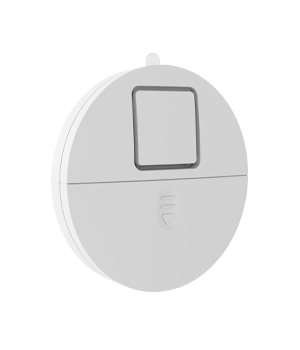Personal Smart Alarms: Your Safety Partner for a Smarter Home
Personal smart alarms are rising to the occasion. These advanced systems don’t just alert you to danger; they predict risks, prevent disasters, and integrate seamlessly into your daily life. Whether you’re safeguarding your family, home, or belongings, here’s how personal smart alarms redefine protection in the modern age.
Why Outdated Alarms No Longer Cut It
Traditional alarms — think smoke detectors, burglar sirens, or carbon monoxide buzzers — have one critical flaw: they’re reactive. By the time they sound, the damage might already be done. Worse, they lack context. A blaring noise won’t tell you if the smoke is from a kitchen mishap or a raging fire, or if a window sensor alert is caused by an intruder or a curious raccoon.
Modern risks require smarter responses. From silent gas leaks to tech-savvy burglars, today’s threats demand systems that act faster, communicate clearer, and even stop emergencies before they escalate.
How Personal Smart Alarms Work: Intelligence Meets Prevention
Unlike conventional alarms, personal smart alarms combine sensors, AI, and connectivity to create a safety net that’s always learning. Here’s what makes them revolutionary:
- Multi-Sensor Detection
These systems use a network of sensors to monitor threats like smoke, motion, water leaks, air quality changes, and even glass breaks. The more sensors, the fewer blind spots. - Instant, Actionable Alerts
Receive real-time notifications on your phone with details: “Water leak detected in basement — severity: high.” Some systems even send video clips (e.g., from linked cameras) to confirm threats. - Automated Prevention
Why just warn when you can act? Smart alarms can:- Shut off water valves during leaks.
- Lock smart doors if intruders are detected.
- Trigger lights and alarms to scare off trespassers.
- AI Learning & Customization
Over time, the system adapts to your habits. For example, it’ll ignore your pet’s movement but alert you to unfamiliar activity at 2 AM.
Top Benefits of Personal Smart Alarms
Switching to a smart alarm system isn’t just an upgrade — it’s a transformation in how you protect your space. Here’s how they deliver peace of mind:
- Proactive Protection
Prevent disasters instead of just reacting to them. For instance, a smart CO detector can alert you to rising gas levels before they reach dangerous thresholds. - Remote Monitoring, Anytime, Anywhere
Check your home’s status via a smartphone app while traveling. Forgot to arm the system? Do it with one tap. - Reduced False Alarms
Smart AI distinguishes between real threats and harmless triggers (e.g., cooking smoke vs. a fire), saving you from unnecessary panic. - Seamless Smart Home Syncing
Pair alarms with other devices for a unified defense. Imagine:- Lights flashing during a break-in.
- Thermostats shutting off to prevent fire spread.
- Smart speakers announcing the danger zone.
- Cost Savings
Avoid expensive repairs by catching leaks or electrical issues early. Some insurance companies even offer discounts for smart alarm users!
Choosing the Right Personal Smart Alarm System
With countless options available, focus on these factors to find your perfect match:
- Identify Your Priorities
- Renters: Opt for portable, wireless systems (e.g., SimpliSafe).
- Homeowners: Invest in hardwired, expandable setups (e.g., ADT).
- Health-focused: Prioritize air quality or fall-detection sensors.
- Ensure Compatibility
Check if the system works with your existing smart home platforms (Apple Home, Google Nest, Alexa, etc.). - Battery Life & Backup Power
Look for alarms with long-lasting batteries and backup options (e.g., solar panels) to stay active during outages. - Professional Monitoring Options
For ultimate security, choose systems with 24/7 monitoring services that dispatch emergency responders if you’re unreachable. - User-Friendly Apps
A clunky app defeats the purpose. Test interfaces for quick access to alerts, settings, and device controls.
Future Trends: What’s Next for Personal Smart Alarms?
The evolution is just beginning. Soon, expect features like:
- Predictive AI: Systems that analyze data to warn you about risks (e.g., “Your wiring shows fire-prone patterns”).
- Voice Integration: “Hey Google, is the garage secure?”
- Community Networks: Alarms that alert neighbors or local authorities in real time during emergencies.
Final Thoughts: Safety Shouldn’t Be Complicated
Personal smart alarms prove that cutting-edge technology can simplify safety rather than complicate it. By blending intelligence, automation, and user-centric design, these systems empower you to protect what matters most — effortlessly.



